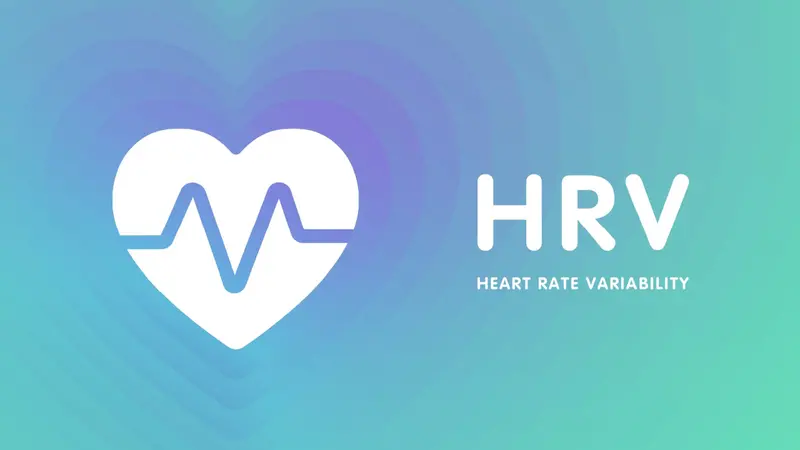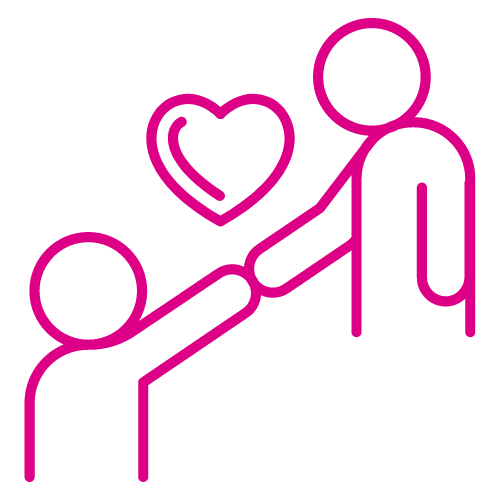

Mental and Behavioral Well-Being

Mental and Behavioral Well-Being
Improve Your Ability to Adapt to Stress Through Heart-Brain Coherence
It goes without saying that breathing and a pulse are important to survival. No matter who you are or how old you are, you understand that in some way, the air you breathe and the thumping in your chest give you life. Breathing rate and heart rate are intricately connected. Understanding this relationship can have powerful effects on health.
When most people talk about their heart rate, they are referencing their average heart rate because heart rate is variable. When breathing in, the heart rate goes up, and when breathing out, the heart rate goes down. The difference between the two is called heart rate variability (HRV). For example, when breathing in, if the heart rate goes up to 90 beats per minute (bpm) and when breathing out it goes down to 70 bpm, the HRV would be 20, which is a realistic goal for most people (15-20 is a good target). The larger the HRV the better. With larger HRV, the heart as well as the whole body become more adaptable to the stresses of daily life. Generally, HRV gets smaller as people age, and is smaller for people who are stressed, especially chest breathers, and they may have HRV values as small as 2 to 5.
HRV is also a good measure of mortality. People with a larger HRV live longer.
The heart beats thanks to the autonomic nervous system; the sympathetic branch speeds it up and the parasympathetic branch slows it down. The autonomic nervous system is a complex system that allows the brain to manage approximately 90% of the processes in the body without having to engage them consciously. This is the domain of the subconscious mind.
The sympathetic nervous system is responsible for the ability to be alert and awake, however, it also mediates the stress response, otherwise known as the "fight-or-flight response." When the fight-or-flight response is triggered during stressful situations, the heart rate increases to facilitate more blood flow and oxygen to your muscles. When a stressful event passes and the breathing rate slows down, the brain interprets the slowed rhythm as a sign that you are safe. In response, the nervous system relaxes, and the stress response dissipates. This primitive response was designed to protect the body from any perceived danger. For example, when being chased by a bear, the sympathetic nervous system would speed up the heart rate and direct as much blood flow as possible to the big muscles in preparation to flee. Additionally, the digestive system, immune system, urinary tract, and reproductive systems would all shut down to conserve energy, as they are unnecessary at that time.
Unfortunately, for most people, perceived danger now presents itself in forms other than physical harm. Stress from a job, family, or other circumstance may trigger the fight-or-flight response. Chronic negative thinking and exposure to stressful environments create unhealthy neural programs. Eventually, the stress response can be triggered easily by any number of subconscious fears, insecurities, or worries instead of the life-threatening circumstances this primal response was meant to address.
The parasympathetic nervous system, the other half of the autonomic system, is vital to allowing the nervous system to balance out and reset during acute or prolonged stress. It is activated on exhalation and plays a vital role in resting and digesting as well as repairing and healing. When the body is in a state of coherence–balance, relaxation, uplifting emotions, joy, love–it easily adapts as necessary to external and internal environments.
As stressful events occur, both the heart and brain will adapt to make sure that the appropriate systems in the body have enough blood and oxygen to handle the stressful event and regain balance once it’s over.
In the early 1990’s, HeartMath® discovered that people could train themselves to create more coherence and improve their ability to self-regulate their emotions by tracking and increasing HRV. One of the most profound and ground-breaking discoveries HeartMath made was that a coherent heart rhythm results from rhythmic stomach breathing (diaphragmatic) while feeling a positive emotion, and that a disorderly rhythm results from chest breathing and feeling depleting emotions such as anger. These findings meant that it is possible to use breath as a form of biofeedback.
(Image created by HeartMath®)
Most people are surprised that, in a few ways, the heart is actually more powerful than the brain. HeartMath’s research found that the heart is 40-60 times stronger in amplitude electrically than the brain, and about 100 times stronger magnetically than the brain.
Through the concept of entrainment–all rhythms in the body will be influenced by the strongest rhythm in the body–the brain is directly impacted by the heart's rhythm, which is why doing HRV training can influence the ability to adapt to stress. HeartMath found that patterns created in the neural signals from the heart affect the brain centers involved in perception, emotional experience, and self-regulation. More generally speaking, increasing your HRV and creating a coherent heart rhythm will facilitate improved brain function and improve your ability to adapt to stress.
For those that want to learn how to train themselves to increase their HRV and improve their ability to adapt and regulate their emotions, there are several options. HeartMath has published several books and developed biofeedback technology, for those who are self-learners. There are also programs such as Coherence Revolution (on the KnoWewell Hub) that will guide and coach you how to use these powerful training techniques.
REFERENCES
Coherence Revolution, by Dr. Mark Halpern
Breaking the Habit of being yourself, by Dr. Joe Dispenza
You are the Placebo, by Dr. Joe Dispenza
Transforming Depression: The HeartMath Solution to Feeling Overwhelmed, Sad and Stressed, by Doc Childre & Deborah Rozman, Ph.D.


 By
By



